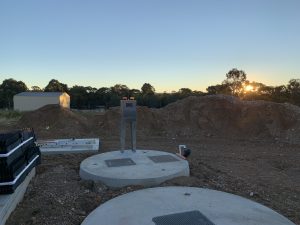Revitalize Your AWTS for the New Year: A Comprehensive Guide to Yearly Servicing
Australia’s Indigenous communities have long held a deep connection with the land, practicing sustainable waste management methods that have stood the test of time. In this exploration, we delve into the traditional waste management practices of Indigenous Australians, drawing lessons that resonate with our modern-day quest for sustainable living through septic systems. Join us on a journey to uncover the wisdom embedded in Indigenous practices and how it can inspire the choices we make for our septic systems in regional Australia.
Understanding Indigenous Waste Management Practices
For countless generations, Indigenous Australians lived in harmony with the land, utilizing natural materials and processes to manage waste. This included human waste, which was integrated into the ecosystem in a manner that respected the delicate balance of nature. The principles of these practices included:
Biodegradability: Indigenous waste management focused on materials that naturally broke down over time, minimizing environmental impact.
Localized Solutions: Waste was managed within the local ecosystem, avoiding long-distance transport and preserving the integrity of the land.
Respect for Nature: Indigenous practices respected the interconnectedness of all living things, ensuring that waste management did not harm the environment.
Modern Septic Systems: Aligning with Indigenous Wisdom
In the journey towards sustainable living, modern septic systems have incorporated many principles that align with Indigenous practices, adapting them to meet contemporary needs. Let’s explore how these systems reflect the lessons learned from Indigenous Australian waste management:
Decentralized Treatment:
Indigenous practices often involved decentralized waste treatment, where waste was managed on a small scale within the community. Similarly, modern septic systems, especially Aerated Wastewater Treatment Systems (AWTS), offer decentralized treatment solutions that reduce the need for extensive central infrastructure.
Environmentally Friendly Materials:
Indigenous waste management emphasized the use of natural, biodegradable materials. Modern septic systems also prioritize environmentally friendly materials in construction and operation, minimizing the ecological impact and promoting sustainability.
Localized Nutrient Recycling:
Traditional Indigenous practices inherently recycled nutrients within the local ecosystem. In the same vein, modern septic systems, through advanced treatment processes, recycle treated water for uses like irrigation, contributing to localized nutrient cycling and supporting sustainable landscaping practices.
Integration with Nature:
Indigenous waste management was deeply integrated into the natural landscape. Modern septic systems, particularly those designed with a focus on ecological balance, seek to integrate seamlessly with the surrounding environment, respecting and preserving the ecological harmony.
Challenges and Opportunities in Regional Australia
While modern septic systems have made significant strides in aligning with Indigenous wisdom, there are still challenges to address, especially in regional Australia. Factors like population growth, changes in land use, and climate variations can impact the effectiveness of septic systems. However, there are also opportunities for improvement:
Community Education:
Indigenous waste management often involved community-wide understanding and participation. Similarly, in regional Australia, community education programs can empower residents to make informed choices about septic systems, fostering a collective commitment to sustainability.
Technological Advancements:
Leveraging technological advancements, especially in the development of advanced AWTS, allows for even more efficient and environmentally conscious waste management. These innovations can address the challenges posed by varying regional conditions.
Policy and Regulation:
Indigenous waste management practices were often guided by community-established norms. In the modern context, robust policies and regulations can ensure that septic systems meet environmental standards while allowing for regional flexibility.
Case Study: Indigenous-Inspired Sustainable Living in Regional Queensland
In Regional Queensland, a community drew inspiration from traditional Indigenous waste management practices to shape their approach to modern living. Through community-led initiatives, they implemented decentralized AWTS systems that prioritized environmentally friendly materials, localized nutrient recycling, and integration with the local landscape. This case study demonstrates the successful integration of Indigenous wisdom into contemporary waste management practices.
Bridging the Past and Present for Sustainable Futures
As we reflect on the sustainable waste management practices of Indigenous Australians, we find valuable lessons that resonate with our modern aspirations for septic systems in regional Australia. By embracing the principles of biodegradability, decentralized treatment, and integration with nature, we can build septic systems that not only respect the environment but also contribute to the rich tapestry of regional living.
In regional Australia, where the land holds a special place in the hearts of communities, the adoption of sustainable septic systems becomes not just a choice but a responsibility. By weaving together the wisdom of Indigenous practices with the advancements of modern technology, we create a narrative of sustainable living that respects the past, embraces the present, and paves the way for a harmonious future in regional Australia.
For a Free Quote and Sizing on all Septic Tanks Made in Australia call the team at Eco-Septic on 1800 808 135
Related Posts
- Why Eco Septic Tanks are the Eco-Friendly Choice for Your Home
- What are the different type of commercial wastewater treatment systems
- Eco-Septic Wastewater Treatment Systems Tailored To Your Needs
- How do I collect rainwater?
- Why We Need Home Sewage Treatment Plant Maintenance
- What is the Best Wastewater Treatment System?
- How Often Should Pump Wells Cycle?
- Reinventing the Septic Tank for the 21st Century





